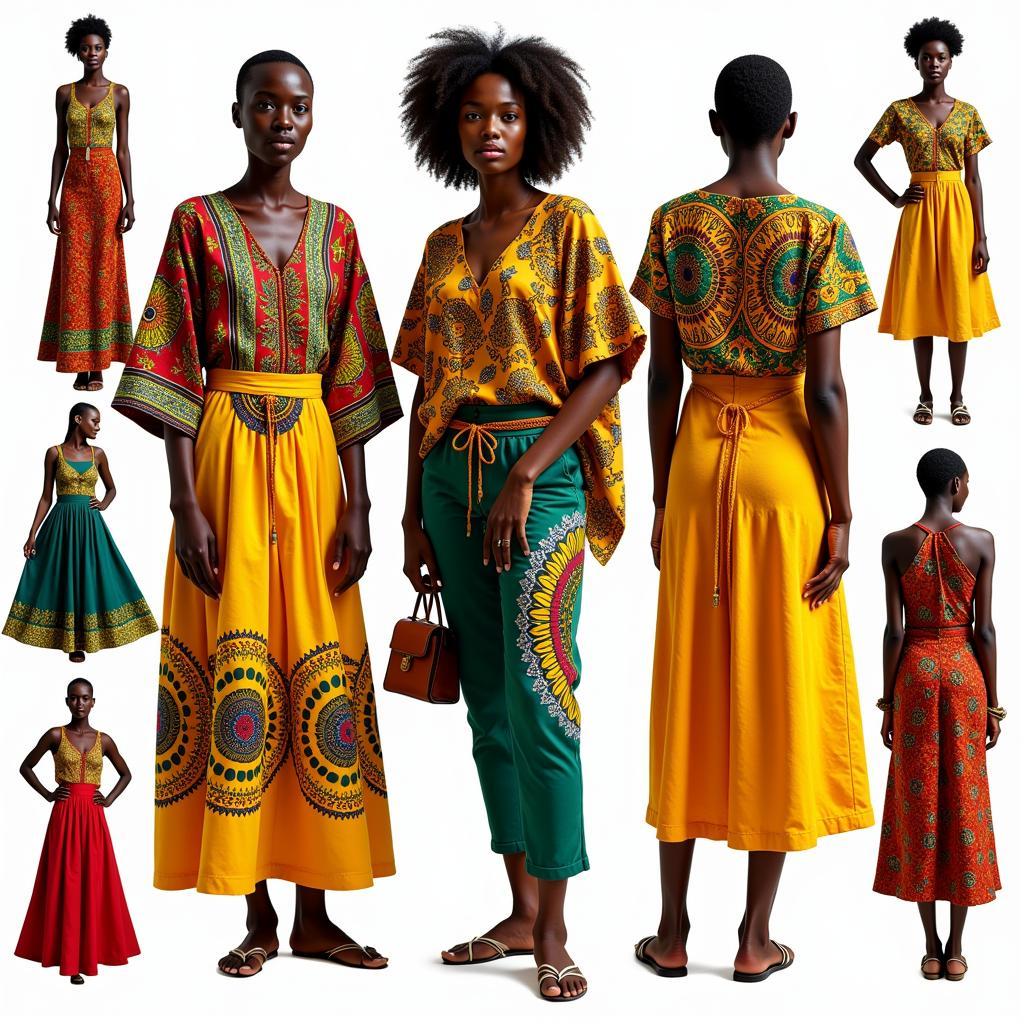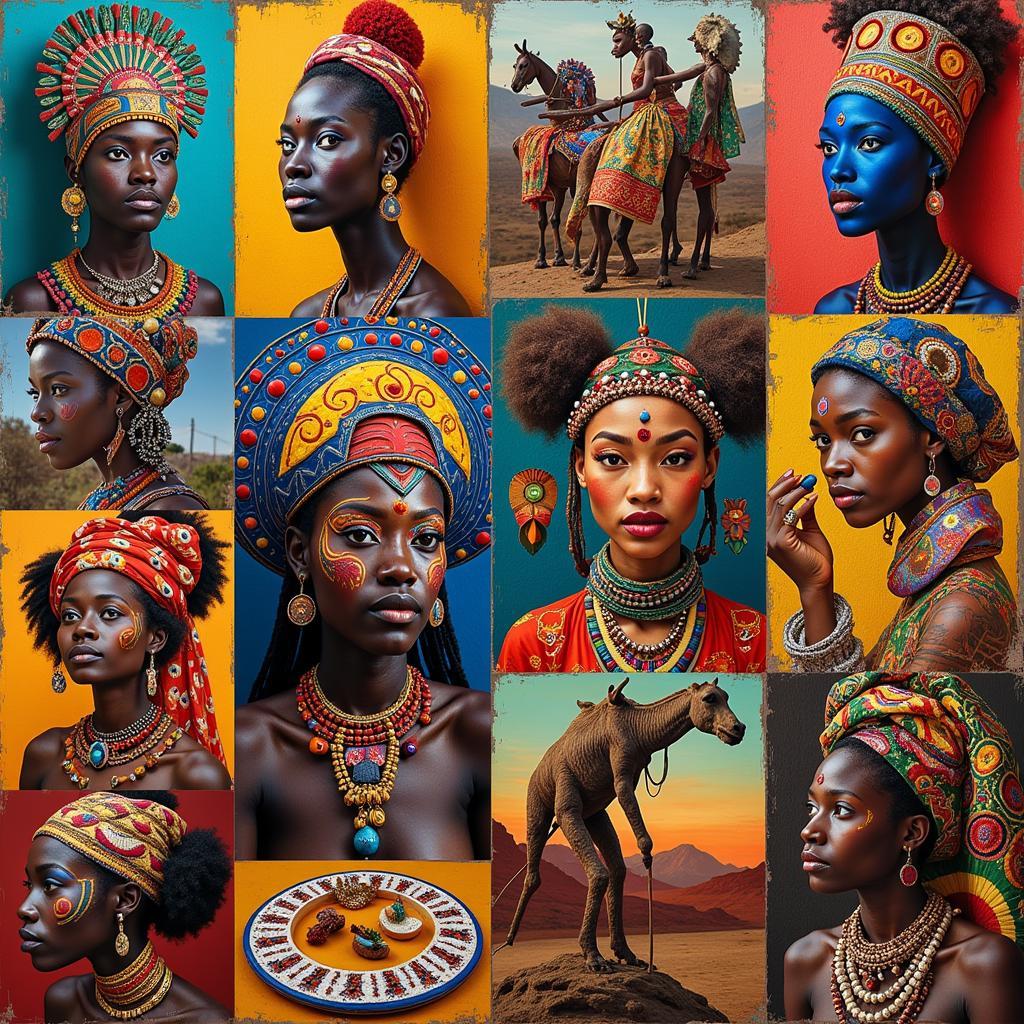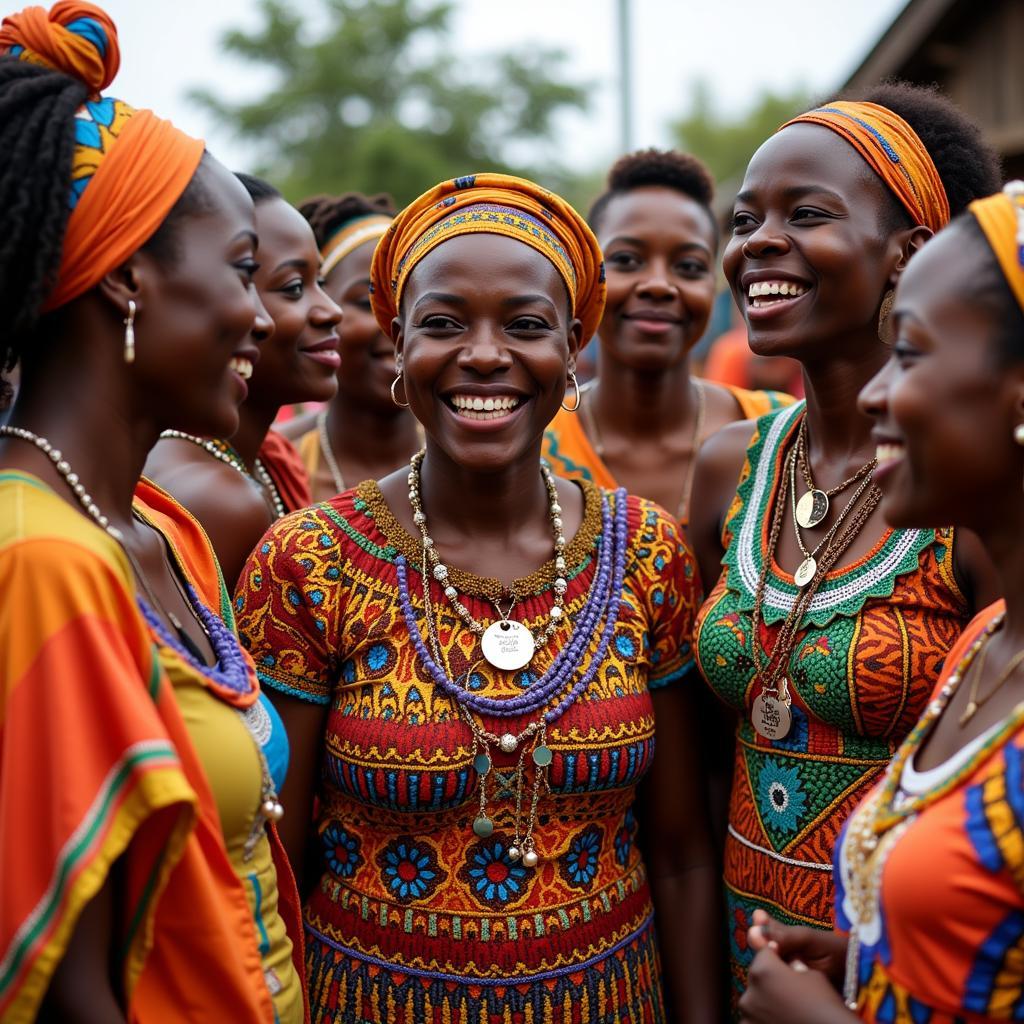African Hair Threading with Yarn: A Comprehensive Guide
African Hair Threading With Yarn is a traditional protective hairstyle deeply rooted in African culture. It’s a versatile and stylish way to manage and protect natural hair, offering a wide range of creative possibilities. This article delves into the rich history, techniques, and benefits of this unique hair art form.
History and Cultural Significance of African Hair Threading
Hair threading has been practiced in Africa for centuries, with evidence suggesting its existence as far back as ancient Egypt. In many African communities, it’s more than just a hairstyle; it’s a form of cultural expression, a symbol of identity, and a rite of passage. Different threading patterns and colors often signify social status, age, or marital status. This practice, passed down through generations, continues to thrive today, representing a connection to ancestral heritage.
Different regions across the continent have their unique threading styles and traditions. From the intricate designs of West Africa to the vibrant colors used in East Africa, the diversity of African hair threading showcases the continent’s rich cultural tapestry. In some communities, threading is a communal activity, fostering bonding and strengthening social connections.
The Art of African Hair Threading with Yarn: Step-by-Step
While techniques may vary slightly across different regions, the core principles of African hair threading remain the same. Here’s a simplified guide to the process:
- Preparation: Start with clean, detangled hair. Moisturizing is essential to maintain hair health throughout the threading process.
- Sectioning: Divide the hair into small, manageable sections. The size of the sections will determine the thickness of the threads.
- Threading: Wrap the yarn tightly around each section of hair from root to tip, ensuring a secure and even coverage.
- Styling: Once all sections are threaded, the hair can be styled into various creative updos, braids, or left to flow freely.
The choice of yarn also plays a vital role. Traditionally, cotton or wool yarn was used. However, today, a variety of yarn types are available, offering a wider range of colors, textures, and durability.
Benefits of African Hair Threading with Yarn
African hair threading with yarn offers several benefits beyond its aesthetic appeal. It’s a protective style that helps minimize breakage and damage, promoting hair growth. The tightly wrapped yarn acts as a barrier against environmental stressors, reducing exposure to sun, wind, and pollution. It also helps retain moisture, keeping the hair hydrated and healthy.
Moreover, African hair threading is a low-manipulation style, requiring minimal daily upkeep. This reduces the risk of hair breakage and allows for longer periods between styling sessions. It’s a versatile and convenient hairstyle suitable for various occasions and lifestyles.
Maintaining Your Threaded Hairstyle
Proper maintenance is crucial for the longevity and health of your threaded hairstyle. Regular moisturizing is essential to prevent dryness and breakage. Avoid excessive tension when styling to minimize stress on the hair follicles. Protective coverings, such as satin bonnets or scarves, can help preserve the style and prevent tangling while sleeping.
“Threading offers a unique opportunity to celebrate and express one’s African heritage,” says Anika Nkosi, a renowned hairstylist and cultural expert from South Africa. “It’s a testament to the creativity and ingenuity of African women.”
Modern Adaptations and Trends in African Hair Threading
While traditional techniques are still widely practiced, modern adaptations and trends have emerged in recent years. The use of synthetic yarns, incorporating beads and other embellishments, and creating intricate patterns have added a contemporary twist to this ancient art form. These innovations have further broadened the creative possibilities of African hair threading, allowing for greater self-expression and individuality.
Conclusion
African hair threading with yarn is more than just a hairstyle; it’s a vibrant cultural tradition, a form of self-expression, and a testament to the ingenuity of African women. From its rich history to its protective benefits and modern adaptations, African hair threading continues to captivate and inspire. So, whether you’re seeking a protective style, exploring your cultural heritage, or simply looking for a unique and stylish look, African hair threading with yarn is a timeless choice.
FAQ
- How long does African hair threading last? Typically, it can last for several weeks with proper maintenance.
- Is African hair threading suitable for all hair types? Yes, it can be adapted for various hair textures.
- What type of yarn is best for African hair threading? Cotton or wool yarn are traditional choices, but synthetic options offer greater variety.
- How often should I moisturize my threaded hair? Moisturizing every other day is recommended.
- Can I wash my hair while it’s threaded? It’s generally recommended to avoid washing while threaded, but gentle cleansing methods can be used if necessary.
- How do I remove the threads? Carefully unravel each thread, avoiding pulling or tugging.
- Where can I learn more about African hair threading styles? Numerous online resources, tutorials, and stylists specialize in African hair threading.
“African hair threading not only protects your hair but also allows you to connect with a rich cultural heritage,” adds Abimbola Adebayo, a Nigerian hair braiding expert. “It’s a powerful statement of identity and beauty.”
Need more assistance? Contact us at +255768904061, email kaka.mag@gmail.com, or visit us at Mbarali DC Mawindi, Kangaga, Tanzania. Our customer service team is available 24/7.



